
The Road to VE Day
VE Day – or Victory in Europe Day – marks one of the most significant moments in modern history: the end of the Second World War in Europe on 8th May 1945. It was a day of relief, celebration, and reflection, not just in Britain but across the Allied nations. But the path to that moment was long, brutal, and shaped by countless battles, sacrifices, and turning points. In this blog, we’ll explore the key events and decisions that led to Germany’s eventual surrender and the long-awaited return of peace to a war-torn continent.
The beginning of the end for Germany can be traced to 6 June 1944 — D-Day —
when Allied forces launched Operation Overlord, the largest seaborne invasion
in history. Landing on the beaches of Normandy, British, American, Canadian,
and other Allied troops began the liberation of Western Europe. Following
intense fighting, Paris was liberated in August 1944, and the Allies pressed
forward towards Germany’s western borders.
when Allied forces launched Operation Overlord, the largest seaborne invasion
in history. Landing on the beaches of Normandy, British, American, Canadian,
and other Allied troops began the liberation of Western Europe. Following
intense fighting, Paris was liberated in August 1944, and the Allies pressed
forward towards Germany’s western borders.
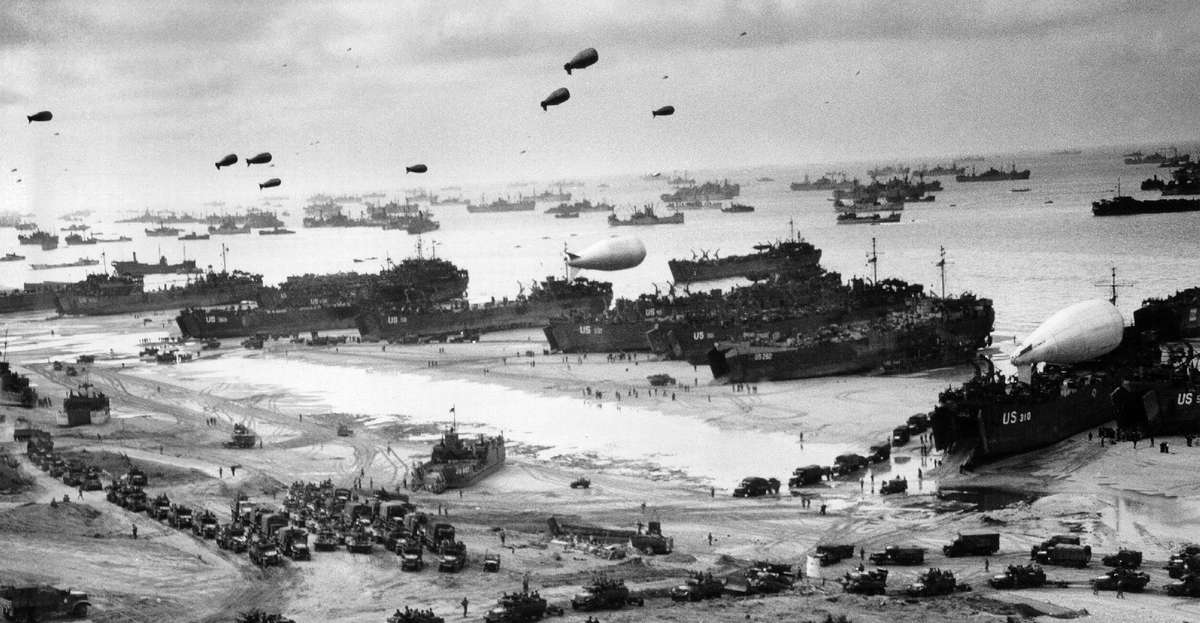
Meanwhile, on the Eastern Front, the Soviet Union had been repelling German
forces since the brutal Battle of Stalingrad in 1943, and by mid-1944, the Red
Army had launched a massive offensive, Operation Bagration, devastating German
forces in Belarus. The Soviets rapidly advanced westwards, liberating much of
Eastern Europe.
forces since the brutal Battle of Stalingrad in 1943, and by mid-1944, the Red
Army had launched a massive offensive, Operation Bagration, devastating German
forces in Belarus. The Soviets rapidly advanced westwards, liberating much of
Eastern Europe.

As 1945 dawned, Germany found itself trapped between the advancing Allies in
the west and the Soviets in the east. The Battle of the Bulge, launched by
Germany in December 1944, was their final major offensive on the Western Front.
Although initially successful in pushing back Allied lines, the offensive
ultimately failed, exhausting German resources and morale. From that point, the
Allies advanced steadily into German territory.
the west and the Soviets in the east. The Battle of the Bulge, launched by
Germany in December 1944, was their final major offensive on the Western Front.
Although initially successful in pushing back Allied lines, the offensive
ultimately failed, exhausting German resources and morale. From that point, the
Allies advanced steadily into German territory.
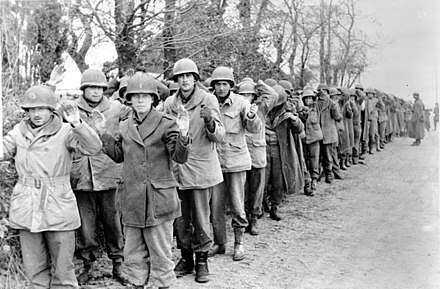
In March 1945, Allied forces crossed the River Rhine, a symbolic and strategic
milestone. Cities fell one after another: Cologne, Frankfurt, and Hamburg among
them. Simultaneously, Soviet troops were pushing into Poland, Hungary, and
finally into Germany itself. The grim reality of the atrocities became clear to
the liberating forces as concentration camps such as Buchenwald and
Bergen-Belsen were discovered.
milestone. Cities fell one after another: Cologne, Frankfurt, and Hamburg among
them. Simultaneously, Soviet troops were pushing into Poland, Hungary, and
finally into Germany itself. The grim reality of the atrocities became clear to
the liberating forces as concentration camps such as Buchenwald and
Bergen-Belsen were discovered.
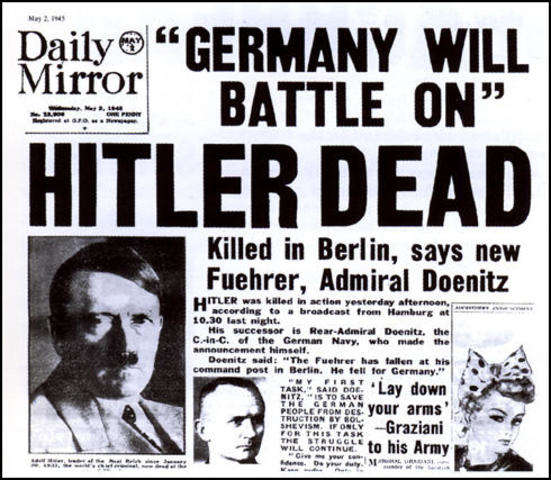
By April 1945, the situation for Germany was hopeless. Adolf Hitler, refusing
to flee Berlin, took refuge in his Führerbunker beneath the city. On 30 April
1945, with Soviet troops mere streets away, Hitler committed suicide.
to flee Berlin, took refuge in his Führerbunker beneath the city. On 30 April
1945, with Soviet troops mere streets away, Hitler committed suicide.
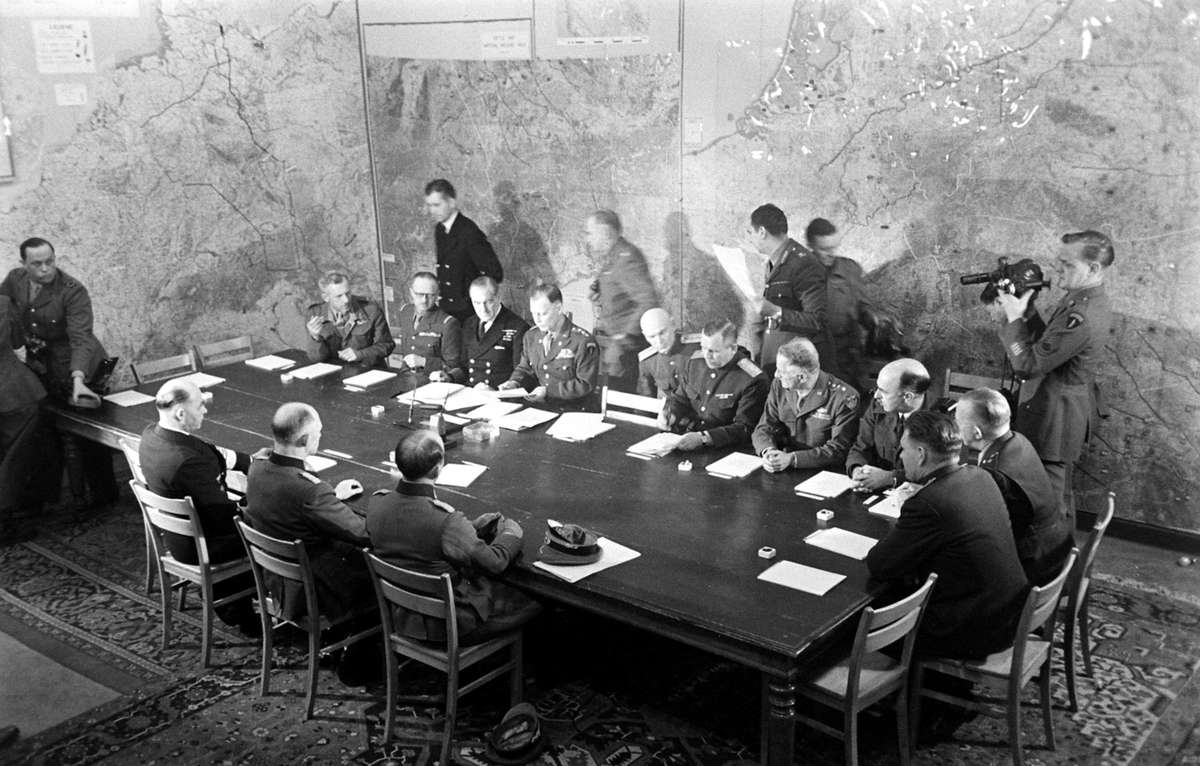
German surrender negotiations began shortly afterwards. Grand Admiral Karl
Dönitz, named Hitler’s successor, authorised General Alfred Jodl to negotiate
terms. On 7 May 1945, at General Eisenhower’s headquarters in Reims, France,
Jodl signed the unconditional surrender of all German forces, effective at
23:01 Central European Time on 8 May (pictured above).
Dönitz, named Hitler’s successor, authorised General Alfred Jodl to negotiate
terms. On 7 May 1945, at General Eisenhower’s headquarters in Reims, France,
Jodl signed the unconditional surrender of all German forces, effective at
23:01 Central European Time on 8 May (pictured above).

In Britain, Prime Minister Winston Churchill announced the news to the nation
at 3 p.m. on 8 May. More than a million people filled the streets of London,
gathering in Trafalgar Square and outside Buckingham Palace. King George VI and
Winston Churchill addressed the nation, while Princess Elizabeth (later Queen
Elizabeth II) and Princess Margaret secretly joined the crowds to experience
the momentous occasion firsthand. Elizabeth later recalled it as "one of
the most memorable nights of my life."
at 3 p.m. on 8 May. More than a million people filled the streets of London,
gathering in Trafalgar Square and outside Buckingham Palace. King George VI and
Winston Churchill addressed the nation, while Princess Elizabeth (later Queen
Elizabeth II) and Princess Margaret secretly joined the crowds to experience
the momentous occasion firsthand. Elizabeth later recalled it as "one of
the most memorable nights of my life."
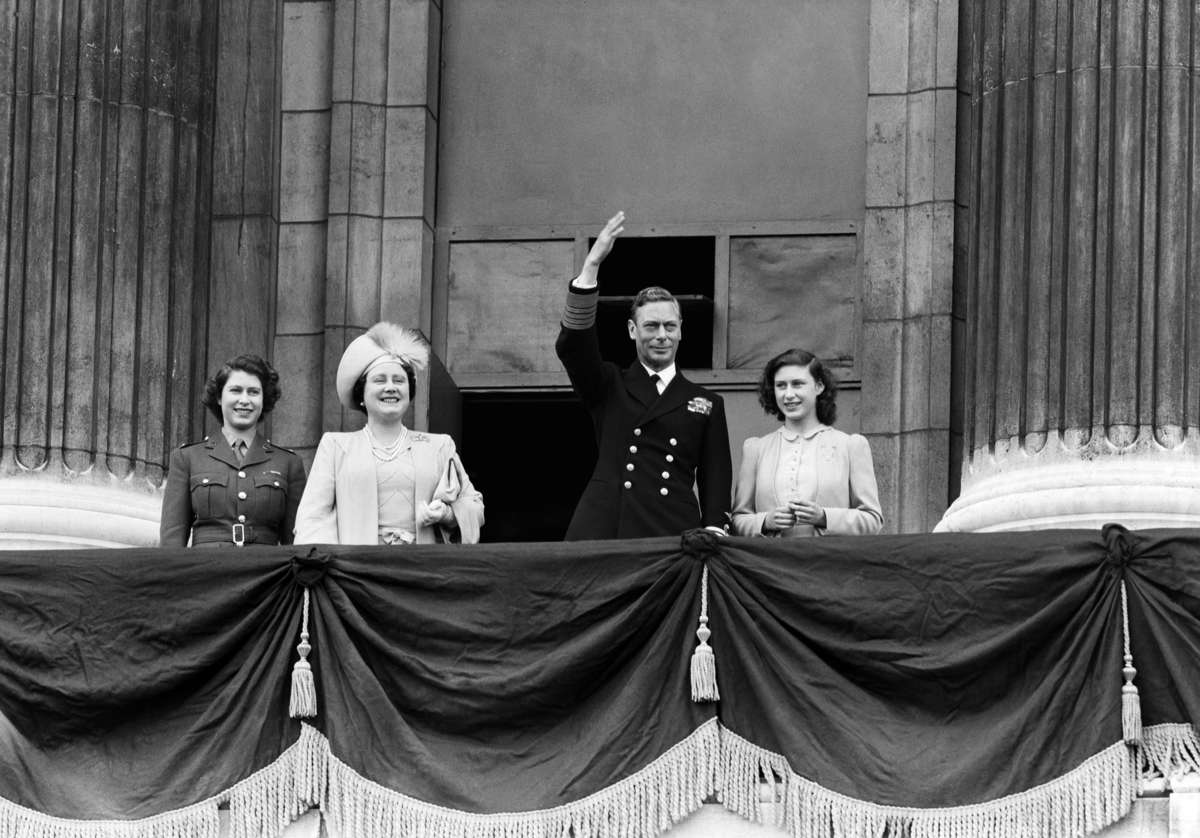
Although war still raged in the Pacific until August 1945, VE Day symbolised
relief, joy, and a sense of closure for a continent devastated by years of
conflict. It was a moment not just of celebration, but of remembrance for the
millions who had sacrificed their lives in pursuit of freedom.
relief, joy, and a sense of closure for a continent devastated by years of
conflict. It was a moment not just of celebration, but of remembrance for the
millions who had sacrificed their lives in pursuit of freedom.
 Skip to content
Skip to content

